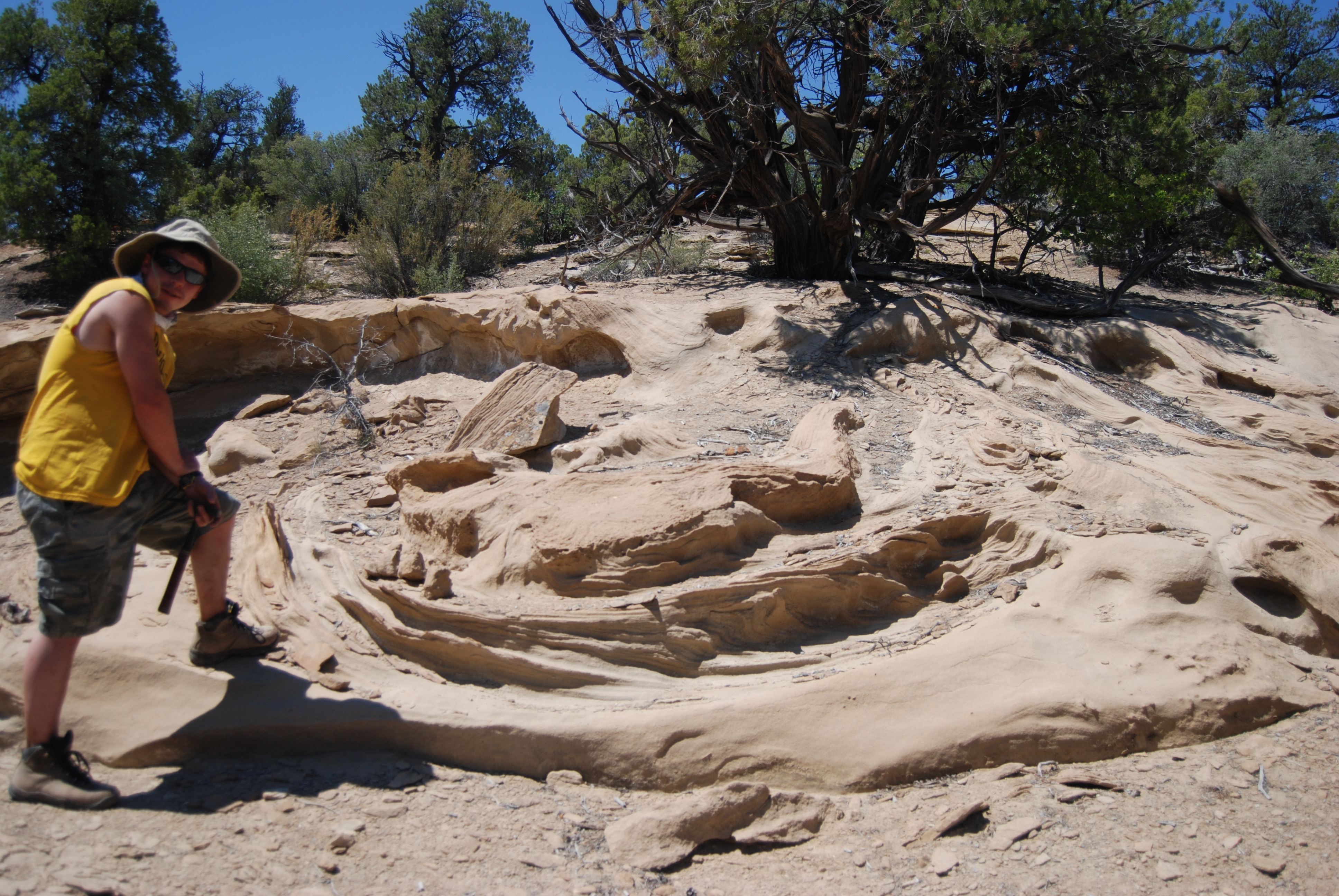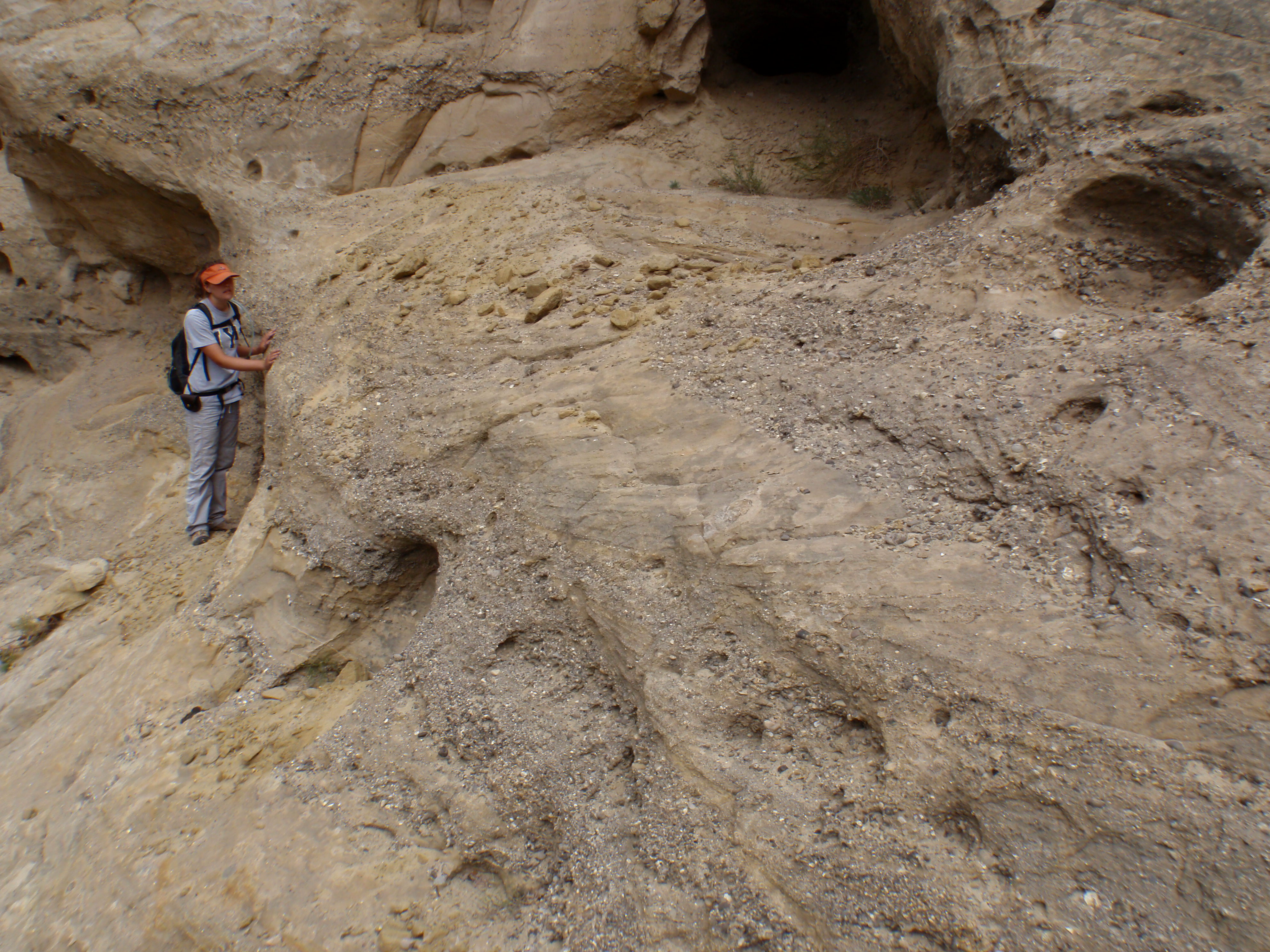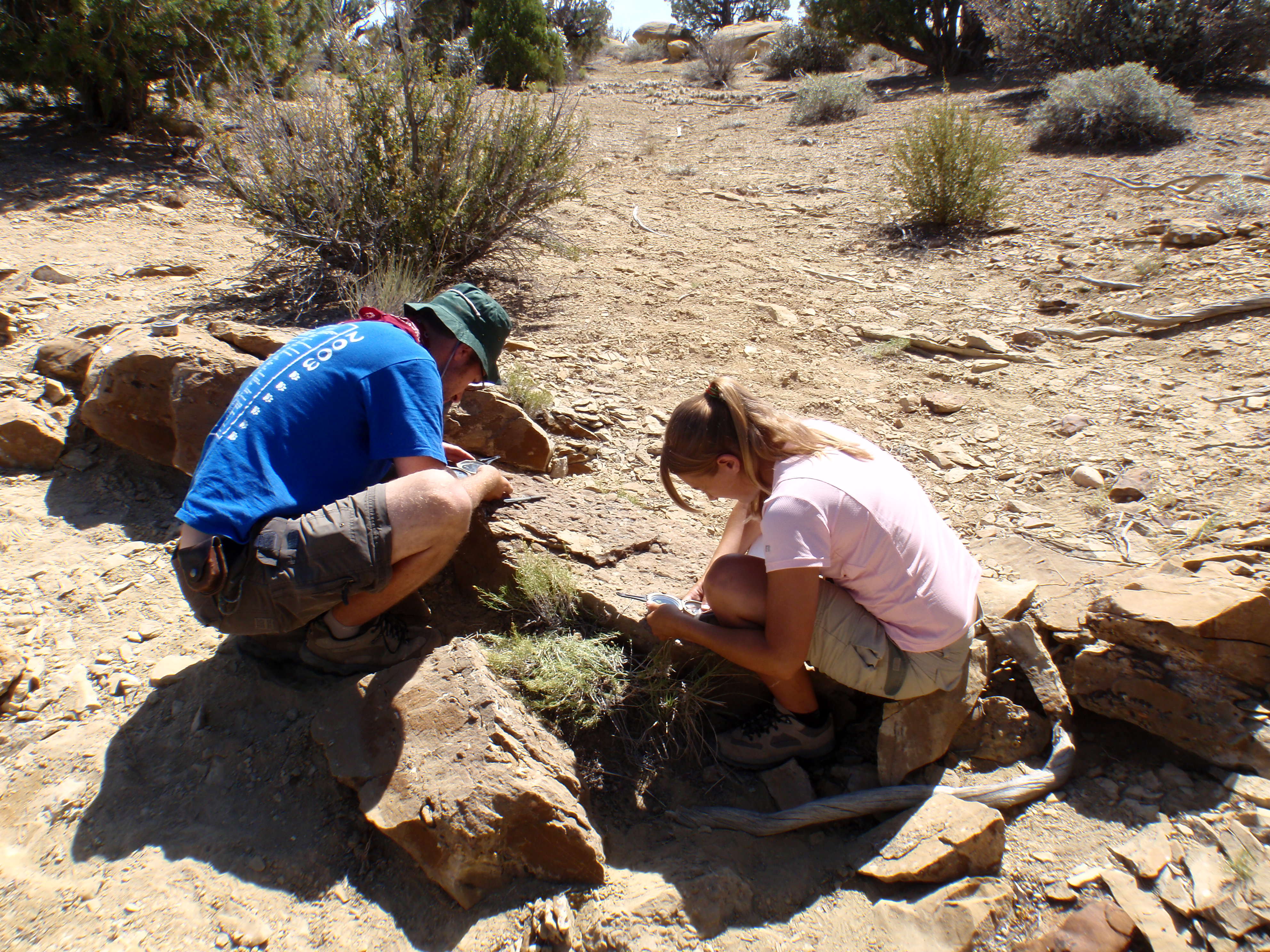Reports: B8
45453-B8 Structural, Sedimentologic, and Stratigraphic Study of Late Cretaceous Normal Faults and Syntectonic Sediments in the Kaiparowits Basin Region, Southern Utah
 During Fall 08 through Summer 09, KU faculty Sarah Tindall (structural
geologist), Edward Simpson (sedimentologist) and KU
students continued to explore relationships among geologic structures, tectonic
movements, sedimentation, surface environments, and earthquakes, all of which
were occurring approximately simultaneously in our field area around 80,000,000
years ago. Mike Wizevich (Professor at Central Connecticut State University)
aided in the description and interpretation of data during the academic year
and also participated in the 2009 summer field season.
During Fall 08 through Summer 09, KU faculty Sarah Tindall (structural
geologist), Edward Simpson (sedimentologist) and KU
students continued to explore relationships among geologic structures, tectonic
movements, sedimentation, surface environments, and earthquakes, all of which
were occurring approximately simultaneously in our field area around 80,000,000
years ago. Mike Wizevich (Professor at Central Connecticut State University)
aided in the description and interpretation of data during the academic year
and also participated in the 2009 summer field season.
During the summer 2009 field season, the field crew consisted of KU undergraduates Kelli Moran, Casey Smith, and Lauren Storm, students Hannah Hilbert-Wolf from Carleton College and Keenan Golder from Central Connecticut State University, and Troy Schinkel, a Connecticut high school teacher.
Preliminary results:
Summer 2009 season - Using global positioning system receivers, topographic base maps, aerial photographs and detailed, scaled field sketches we tested hypotheses concerning variation in seismic style across two earthquake-generating faults in the area about 80 million years ago.
We concentrated on the local fault cutting the Cockscomb in Grand Staircase-Escalante National Monument, Utah, in particular the thickening and thinning relationship of the upper member near the faults. We also examined the variation in the seismic response of the sediments by evaluating the soft-sediment deformation using a semi-quantitative scale. The two faults subdivide the sequence into a southern (south of the southern fault), central (bounded by both the northern and southern faults) and a northern block (north of the north fault). Our preliminary conclusions are that 1) two types of fluvial systems exist in the upper member in the central block, both meandering and braided with the most likely control being local fault movement, 2) in both the southern and northern block the meandering stream system is possibly eroded way, 3) adjacent to the southern-most fault in the southern block, a sag pond was generated that filled with massive mudstones and macerated plant material, 4) the central block exhibits the greatest seismic intensity followed by the southern block, and 5) the northern block displays weak seismic intensity. We started the preliminary work on the boundary between the capping sandstone of the Wahweap Formation and the overlying Kaiparowits Formation. At two locations, we did reconnaissance work in which we have recognized up to eight meters of topographic relief. This scale of erosional relief is consistent with a significant sequence boundary being placed at the contact. We plan to do more detailed examination of this contact during the 2010 field season.
All summer fieldwork participants are helping to analyze data collected during the 2009 field season. Our research resulted in several presentations at conferences, and three refereed papers in international journals over the last year. Five additional papers are in the draft stage and should be submitted shortly.
The following presentation was given at the Cretaceous Conference: Advances in Western Interior Late Cretaceous Paleontology and Geology, May, 2009 at St George, Utah:
1. Hilbert-Wolf, H.L., Simpson, E.L., Tindall, S.E., Wizevich, M.C., Simpson, W.S., *Bernard, J., 2009, Recognition and implications of seismites in the Upper Cretaceous Wahweap Formation, Kaiparowits Basin, Utah: Grand Staircase-Escalante National Monument Cretaceous Conference: Advances in Western Interior Late Cretaceous Paleontology and Geology Abstracts with Program, p. 24.
 In addition, the following presentations will be
delivered at the 2009 national meeting of the Geological Society of America in Portland,
Oregon, Oct. 18-21, 2009:
In addition, the following presentations will be
delivered at the 2009 national meeting of the Geological Society of America in Portland,
Oregon, Oct. 18-21, 2009:
1. *Moran, K.L., Simpson, E.L., ^Hilbert-Wolf, H.L., Wizevich, M.C., #Golder, K.B., Tindall, S.E., 2009, The recognition and implications of the wood-boring trace fossil Asthenopodichnium xylobiotum in Upper Cretaceous strata of Grand Staircase-Escalante National Monument, Utah: Geological Society of America Abstracts with Programs.
2. ^Hilbert-Wolf, H.L., Simpson, E.L., Wizevich, M.C., Tindall, S.E., 2009. Seismite Intensity Studies in the Wahweap Formation, southern Utah: Unraveling Syndepositional Fault Movements and the Differential Effects in the Hanging Wall and Footwall Blocks. Geological Society of America Abstracts with Programs, v.
3. Wizevich, M.C., Simpson, E.L., ^Hilbert-Wolf, H.L., Tindall, S.E., 2009, Syndepositional origin for internal laminations of spectacular seismogenic load structures in the Late Cretaceous Wahweap Formation, Grand Staircase-Escalante National Monument, Utah: Geological Society of America Abstracts with Programs.
4. #Golder, K.B., Wizevich, M.C., Simpson, E.L., *Storm, L.P., 2009. Oligocene ichnofossils in non-marine limestone of the Brian Head Formation, Utah: Geological Society of America Abstracts with Programs.
* KU UNDERGRADUATE STUDENTS
# CENTRAL CONNETICUT STATE UNIVERSITY UNDERGRADUATE STUDENT
^ CARLETON COLLEGE UNDERGRAUATE STUDENT






